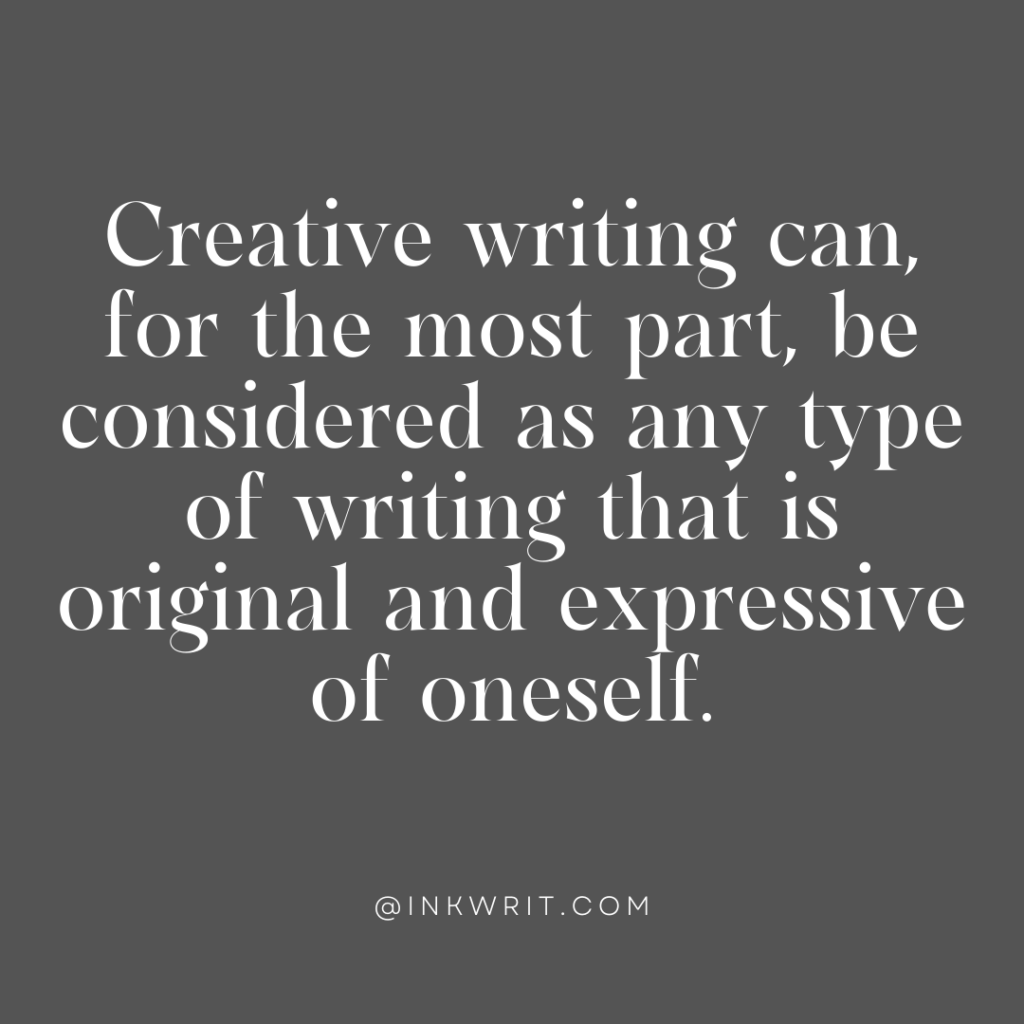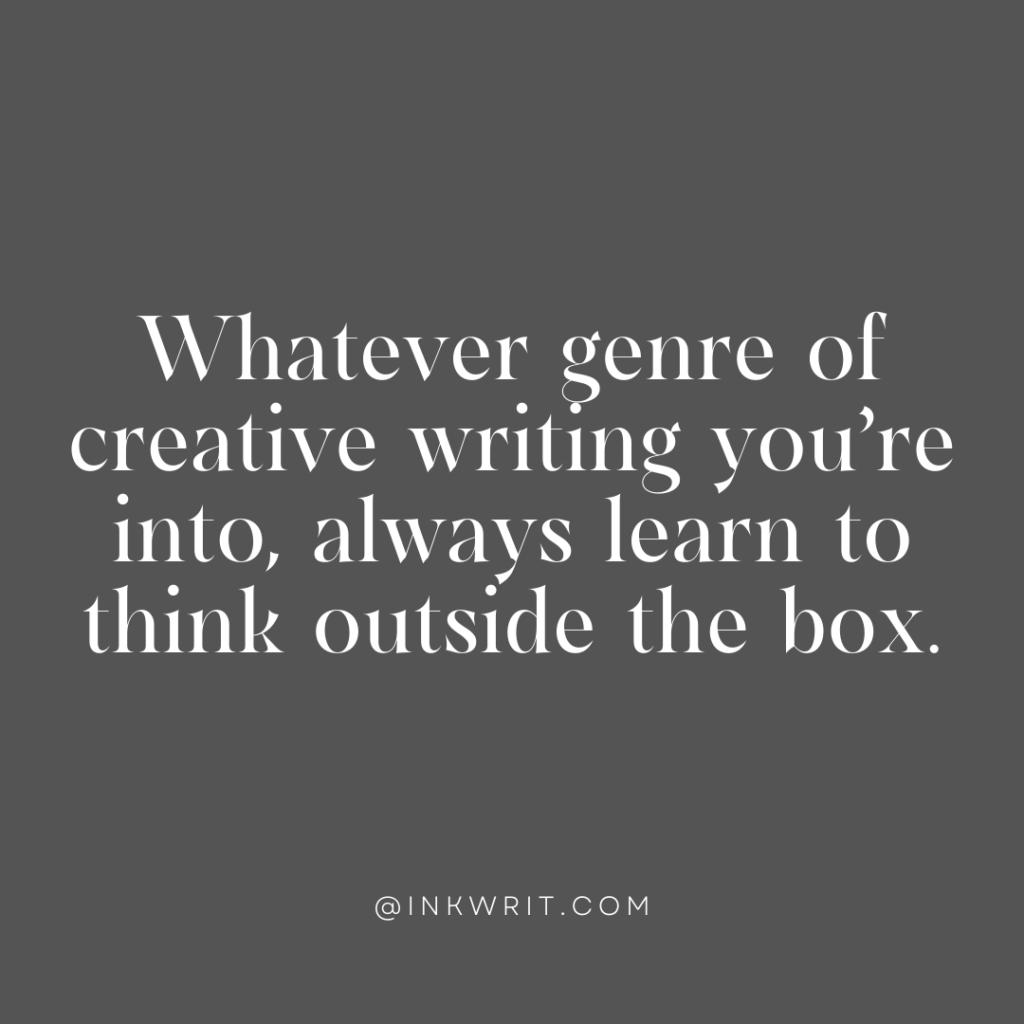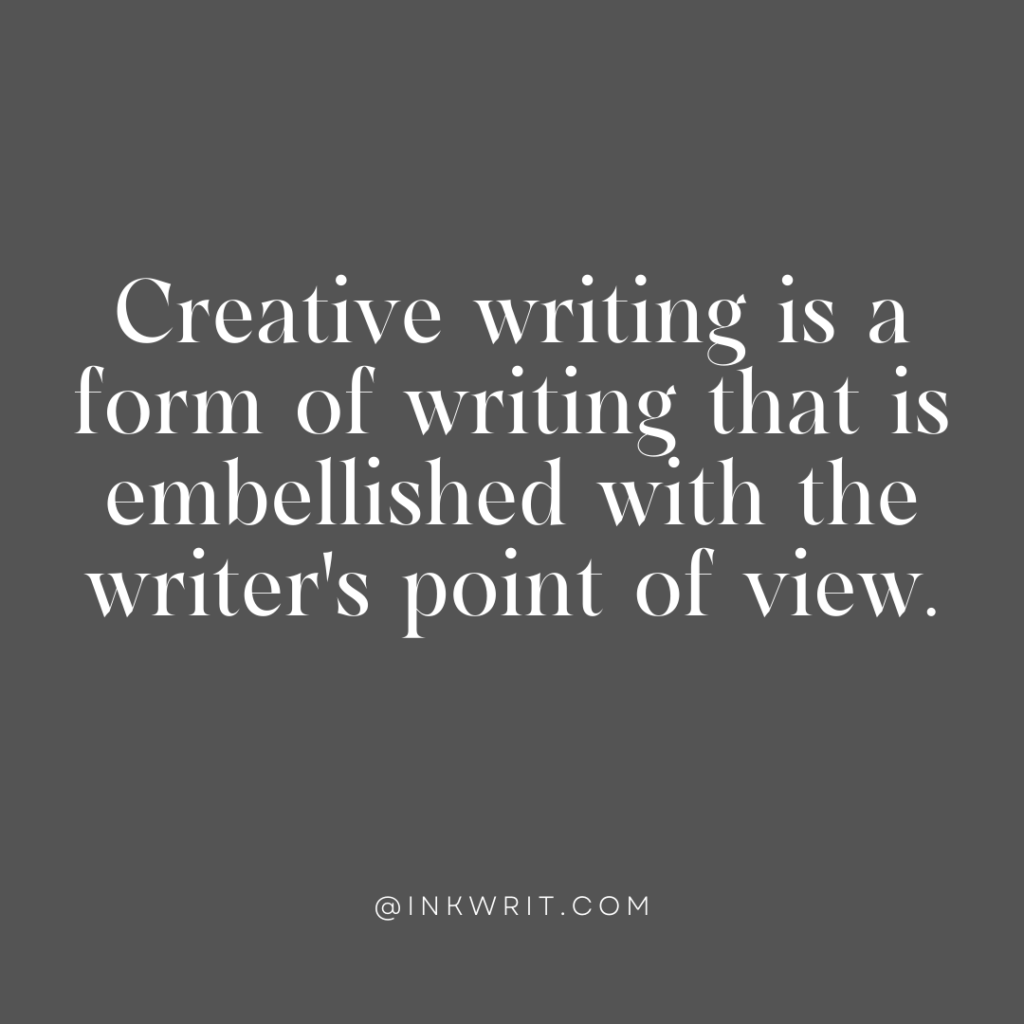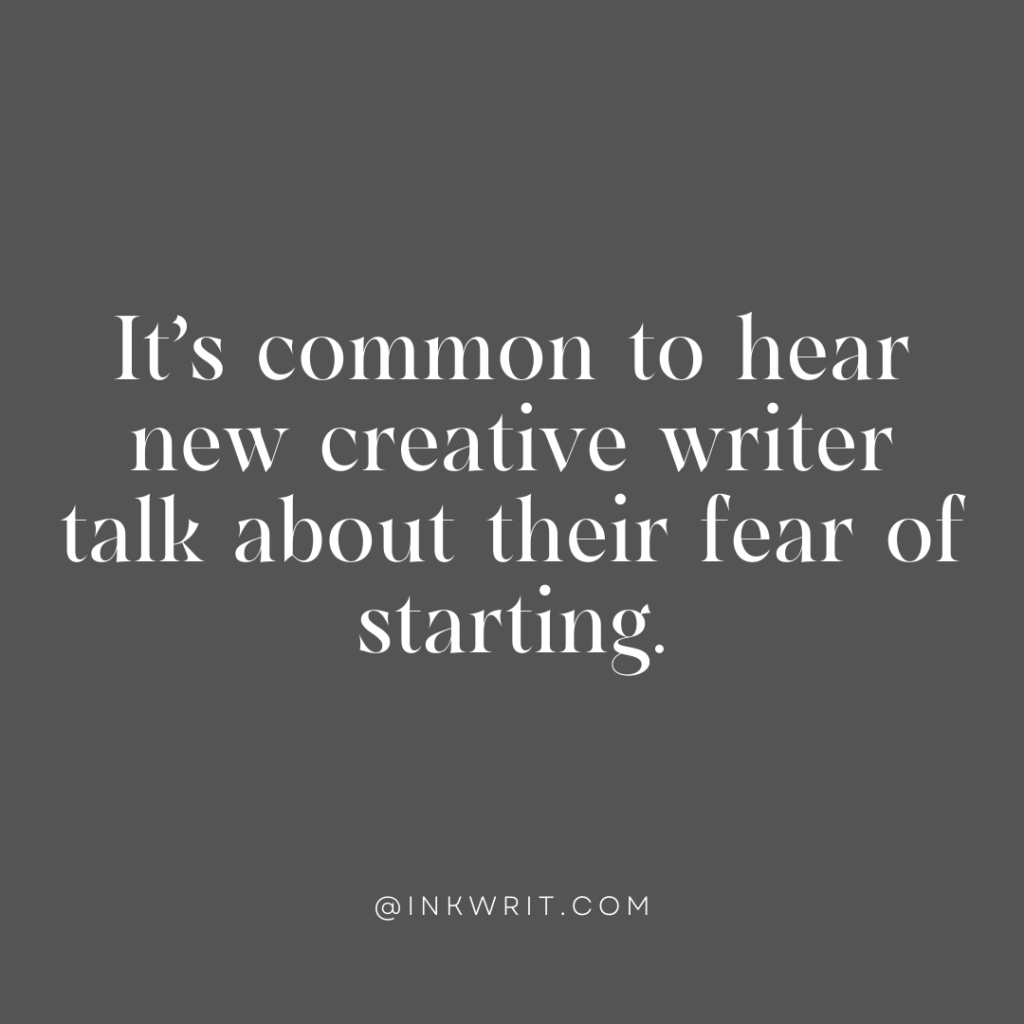What is creative writing. According to a definition shared on the Writers Helping Writers Facebook group, creative writing is a form of writing that goes beyond the traditional realms of normal, professional, academic, or technical forms of writing.
Instead, it encompasses several different genres and styles across a whole range of fields of both fictional and non-fiction writing; storytelling, playwriting, poetry, prose, journalistic, and more.
Though the definition can be quite vague, creative writing can, for the most part, be considered any type of writing that is original and expressive of oneself.
Typically, it can be identified by an emphasis on narrative craft, focusing on elements such as character development, narrative, and plot, infusing its structure with imagination, invention, and story.
In this sense, creative writing can technically be considered any writing of contemporary, original composition – It’s bound by no standard conventions and uses a whole range of elements in its craft.

Now that you’ve understood the meaning of creative writing, you’ll also learn about the…
- Genres of creative writing
- What creative is not
- Problems creative writers face
- How to become a creative writer
- Finally, 9 tips that can help you improve as a creative writer
Let’s dive in…..
Genres of Creative Writing (What is Creative Writing)
In creative writing there are two sets of writers; those who go to school to learn about creative writing and those who are gifted creative writers. These set of writers are in the same boat, however in case you’re deciding which area to focus on as a creative writer, here are the genres of creative writing you can choose from…
- Fiction:
Fiction is a type of storytelling where you create characters, places, and events from your imagination. A fiction story is not a true story. Novels, short stories, and other kinds of made-up tales are all part of fiction. It’s a way for you to take readers on an imaginary journey, and explore emotions in a world you created.
2. Nonfiction:
Nonfiction in creative writing is all about telling real-life experiences. Instead of imagining, you can use essays, articles, and memoirs to capture the details of the human experience.
3. Prose:
Prose is telling a story in a narrative format, it’s often used in novels, articles, and novellas. Its versatility lets you tell your story in various styles from poetic to straightforward.
4. Play:
Play in creative writing is like setting a stage on fire. In plays, you dictate how characters move and speak, using scripts. Play gives your audience a real-life experience that goes beyond just reading. Play comes to life through stage performance using written words.
5. Poetry:
Poetry is like the heartbeat of creative expression. It’s a unique way you can use words to create a symphony of feelings and vivid images. In creative writing, as a poet you package words mixed with emotions into carefully crafted verses, turning language into art.

6. Article:
In creative writing, articles are well-crafted information that blends facts and insights into a cohesive narrative, enlightening readers on topics from science to culture. In an article, you can balance information and storytelling, making your content engaging and thought-provoking.
7. Essay:
Essays in creative writing are like intimate conversations. Writers use this genre to share personal reflections, analyses, and interpretations. An essay is a unique way of adding your voice to a broader dialogue of ideas, thereby connecting with readers on a profound level. It’s a way for you to express your thoughts personally and deeply, creating a meaningful exchange of ideas with readers.
8. Novella:
A novella is like the middle ground between a short story and a novel, blending brevity with depth. In this genre, writers focus on a specific theme or set of characters, creating a narrative that’s more extensive than a short story but more concise than a novel.
Novellas offer a unique balance, allowing for deep exploration while keeping the storytelling intact. It’s a form of writing that captures the best of both worlds, providing a compelling narrative that falls between the impact of a short story and the exploration of a novel.
9. Memoir:
Memoirs are like personal stories in creative writing, capturing lived experiences. As a writer, in this genre, you become the architects of your own narratives. A memoir is a way to invite readers into your intimate life, offering a deeply personal and reflective journey.
You share emotions, challenges, and lessons learned, creating a rich and authentic reading experience. It’s a way for you to connect with readers through experience.
10. Folklore:
Folklore in creative writing echoes cultural narratives through myths, legends, and fairy tales. It connects generations, shared beliefs, and stories across diverse cultures.
As a writer in this genre, you help to preserve cultural wisdom, morals, and traditions, creating a collective narrative that spans time and geography. Folklore enriches our understanding of the world, offering insights into the human condition and connecting us to our shared human history.
11. Graphic Novels:
Graphic novels blend visuals and narrative to create a unique storytelling experience. Writers and artists collaborate to tell stories through a combination of images and words, forming a visual symphony that immerses readers in a dynamic narrative.
Unlike traditional novels, graphic novels use illustrations to complement and enhance the written story, resulting in a richer and more engaging experience. This collaborative approach allows for a vibrant and dynamic form of creative writing, breaking traditional boundaries and inviting readers into a world where words and visuals harmonize.
12. Comics:
Comics are like the lively and dynamic siblings of creative writing, similar to graphic novels. They bring storytelling to life with a visual rhythm, offering a unique experience through a mix of images and dialogue.
Each panel contributes to the story’s flow, creating a playful and engaging narrative. In comics, concise dialogue and vivid illustrations work together for a swift and immersive reading experience.

Creative Writing Is Not
1. Academic: Creative writing is not an academic form of writing, while there are guidelines, it often allows for more flexibility and personal style. It does not adhere strictly to the formal structures and tones commonly associated with academic writing.
2. Factual: Unlike professional writing, which often prioritizes presenting facts and information accurately, creative writing is portrayed through fiction, imagination, and embellishment.
3. Impersonal: Creative writing is a form of writing that is embellished with the writer’s point of view, this is why it’s classified as an impersonal form of writing. Writers are free to infuse their own experiences, emotions, and insights to create a more entertaining, and intimate atmosphere for their readers.
4. Necessarily Published: To some writers, creative writing is a leisure activity that they engage in as a means of self-expression and they are not seeking external validation through publication.
In case you’re ready to publish and promote your creative work I implore you to check on our latest article on how you can write a marketing plan for your book and also check out 30 powerful ways you can market your book.
5. Limited to Fiction: When you think of creative writing you think of fiction, however, creative writing also includes other forms such as poetry, drama, and creative non-fiction. It encompasses a wide range of forms such as poetry, prose, and comics, and is not restricted to storytelling alone.

As a newbie creative writer you’re bound to face certain challenges that may impede you from writing. Here are some of the common problems that were shared on writers helping writers Facebook group
Problems Creative Writers Face:
Bad/no structure
A structure is what gives your story a proper direction. Whatever you do, you must come up with a good story structure first. You won’t write a readable book unless you have a structural overview of how the narrative develops. you’re lost inside your own book, the reader will be, too.
Think of it like this: a reader enters a book as a person enters a labyrinth, not knowing where it will lead but trusting they’ll find a way through. They can do this only because the writer has created the structure of the labyrinth and can see it from above. It’s difficult to design a labyrinth when you’re inside it.
Poor narrative focus
Writers often fill their sentences with clauses that hide or overcomplicate what they’re trying to say. Consider this: ”Broken only by the occasional groan of shifting oak joist, silence engulfed the Annex, now enduring its second century of infrequent maintenance.
”What’s the focus? The breaking? The joists? The silence? The age of the building? The maintenance frequency? Decide what the reader should be focusing on and structure the sentence accordingly.
Cliched/Generic writing
”Every bone in her body wanted to leave the party. Really? Every bone? Did his incus want to leave? Her phalanges? How does a bone want something?
The sentence is totally meaningless except that it’s a phrase many people use. Avoid writing by numbers. Think about how the character actually feels and describe it.
Narrative logic
The text has to make sense. What’s wrong with this extract: The room was totally pitch black. Sara looked at her reflection in the mirror and saw her own terrified face. She saw her reflection in the pitch-blackness?
Ask yourself what the reader can actually see. Ask yourself what’s possible or likely. If a man sprints up thirty floors of steps inside a building, he’s not going to have a conversation when he arrives at the top step. He won’t be able to breathe very well. The problem is that many people start to write without thinking where they’re going or how the reader should react.
Paragraphing
Many writers don’t know when to change a paragraph. This makes it difficult for the reader because paragraphs indicate where we are supposed to look and how quickly the prose should move. Change paragraph every time you change the speaker, the perspective, the timeframe, and the place.

How to become a creative writer
To become a creative writer do you need to devour books, study literature, or take professional courses? Yes you need to be an avid reader to become a better creative reader or take online courses however, below are the steps to take to get started:
1. Make a decision to write:
The journey of a thousand miles begins with a step, thus the first step towards becoming a creative writer is making a deliberate decision to commit to your skill. Set aside any doubts or fears and embrace your passion for writing. Believe in your ability to create compelling stories, poetry, songs, etc.
2. Take a course on creative writing:
Many creative writers who are excelling in their crafts were able to begin their crafts because they took courses on creative writing. You can key into this if you’re finding it hard to start.
These courses offer guidance from experienced instructors, constructive feedback, and opportunities to refine your craft alongside fellow aspiring writers.
3. Practice:
The best way to begin a craft is to start practicing, like any skill, practicing improves your skills. Set aside time each day to write, even if it’s just for a few hours. Embrace different writing styles, and utilize different prompts to practice your skills.
4. Join creative writing groups:
There are different creative writing groups available on social media like Facebook and LinkedIn, when you join these groups, you’ll find like-minded individuals who share your passion for writing.
Joining creative writing groups or communities provides a supportive environment where you can share your work, receive feedback, and learn from others. Engaging with fellow writers can inspire and motivate you to keep writing.
5. Join creative writing challenges:
The benefits of joining creative writing challenges are, they motivate you to start writing quickly, you get the chance to get feedback from likeminded writers and you see yourself meeting up with your desire to become a creative writer easily.
6. Start a blog:
Starting up a personal blog, is one of the fastest ways to become a creative writer. The benefits that comes with these are; that you’ll have enough room to practice, showcase your craft to the world, and easily monetize your skills.
7. Make use of writing prompts:
Writing prompts are very helpful, they help you overcome writer’s block, give you ideas, and spark your creativity. Whether it’s a word, phrase, or scenario, prompts provide a starting point to inspire your writing.
8. Keep reading:
Great writers are also avid readers. Learn to cultivate the habit of reading. Read widely don’t restrict yourself to books related to your genre and like they see the more read the wiser you become.
9 Tips That Can Help You Improve As A Creative Writer
- Think outside the box: whatever genre of creative writing you’re into, always learn to think outside the box this will heighten your creativity and make your write-up compelling.
- Read Widely: Reading is one of the ways you can get better as a creative writer. The fact is the more you read the better you become. Pro tip: Read materials from other niches and I suggest you join a reading club to lay your hands on good books.
- Write Regularly: The importance of writing regularly can never be overemphasized. The more you write the better you become every day. Writing regularly helps to improve your mental capacity and increase your writing speed. Pro tip: Dedicate regular time to writing and experiment with different styles.
- Study your Environment: Your ability to take note of what is happening around you gives you the ability to produce good content. Studying your environment keeps you inspired and helps you to deal with writer’s block.
- Listen to music: music is a good source of inspiration, make it a habit to listen to good music to help you stay inspired.
- Show Don’t Tell: As a creative writer, it’s advised that you use more descriptive words and actions; this helps to make your work livelier and create more imagery in the heart of your reader.
- Edit: Be quick to write and slow to edit, writing is an art, and as part of improving your creative writing skill you need to learn how to edit and revise your write-up.
There are soft wares that can aid your editing process. However one of my prescribed methods is to write quickly and edit slowly. This is effective if you’re dealing with short content.
- Voice: As a creative writer, you need to develop a unique voice/ tone, this will help your reader develop a likeness and connect well with your works.
9. Have a mentor: A mentor is someone who has gone ahead. Having a mentor to guide you; will help you to experience quick improvement.
Let’s wrap up
Creative writing is an interesting form of writing that creates adventure both for the writer and the reader. With its various genres, you can immerse yourself in the pleasure they provide and transfer the same feeling to your readers, thereby creating a lasting and memorable time for them.
There’s no super genre all of its categories provide a unique and rich experience. This is a form of writing you can easily monetize and earn from it.
Don’t be scared to tap into your creative writing ability and start earning from it we have made a little book that can help you get started this very moment. Above all, I wish you all the best!




